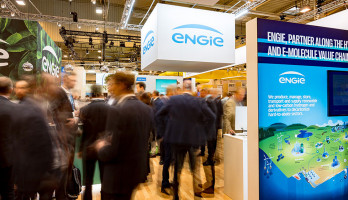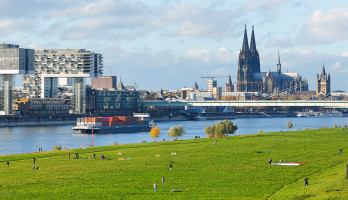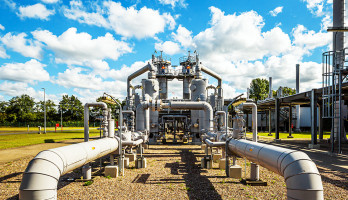
Energy management in facility management – much untapped potential
The operation of buildings and plants requires enormous amounts of energy and thus contributes significantly to the production of climate-damaging greenhouse gases. According to the German Energy Agency (dena), the annual cost of building energy in the Federal Republic alone amounts to approximately 65 billion euros. The heterogeneous building sector offers considerable savings potential: It is not for nothing that energy-efficient construction and facility management are regarded as important keys to the success of the energy transition.
Due to rising energy prices and their increasing share of the management costs, the energy efficiency factor in the building sector is also gaining in importance. In addition, reducing energy consumption is often one of the few remaining ways those responsible for technical building management can reduce costs. The connection between energy management and facility management is thus of increased importance. For years now, the German Association for Facility Management (GEFMA) has been promoting sustainability as an important element of building management. However, many companies and building owners are only at the beginning or only moderately responding to this initiative.
Environment and energy management: Focus on conserving resources and saving costs
In view of climate change in particular and the CO2 reduction sought in this context, sustainability plays an increasingly important role not only in the construction but also in the use of buildings. According to dena calculations, approximately 35 percent of the total German final energy consumption is generated in building management and generates almost 190 million tons of CO2 per year.
This is exactly where energy management in facility management comes in: For the purposes of GEFMA, the central task of energy management is to optimize the energy supply, consumption and the associated costs without, for example, restricting the user comfort, the availability of the system or the useful life of buildings.
The basis for effective energy management in the building is professional energy controlling. In a second step, the necessary optimization measures are derived and implemented from the detailed recording, analysis and evaluation of the consumption data. The increased energy efficiency contributes to cost reductions as well as to the conservation of resources and the environment and at the same time strengthens the energy awareness of the users.
Energy management and facility management are still too rarely combined
"In principle, more sustainability in the use phase of a building is naturally desirable; after all, this is the longest period in its life cycle," emphasizes Stefan Schwan, Head of Facility Services at ENGIE Deutschland. Schwan sees several reasons for the slow implementation so far:
- The areas of energy management and facility management are usually the responsibility of different people for the customer.
- The potential of the combination of services is not yet known in most companies.
- The interdependence between production and consumption is usually not known to the purchasing department.
- Purchasing energy management services is still an unknown process for many companies.
No contradiction between efficiency and sustainability
Many companies see a seeming contradiction between efficiency and resource-efficient operation and are highly price-driven when purchasing services. With the innovative combination of energy management and facility management, ENGIE is already in a position to optimize the operation of technical installations without additional investments for increasing energy efficiency.
Further savings potential by optimizing energy delivery
Future-oriented energy management is not only about reducing consumption values, but also about optimizing energy provision as sustainably as possible. Networked energy management systems open the boundaries between facility management, energy use and plant technology. For example, self-sufficiency via renewable energies promises further major savings – for example through the use of photovoltaic systems, which are financed, installed and operated by ENGIE as part of a contract. In addition to significantly reducing electricity costs and reducing emissions, feeding excess energy into the grid generates additional revenue. A win-win situation for all contracting parties and the environment!
Conclusion: Energy Management and Facility Management – Sustainability as a lucrative business model
Without the use of modern energy management systems, the supply of energy to buildings remains expensive and unsustainable. When energy management and facility management are interlocked, energy efficiency can be increased and costs and greenhouse emissions can be reduced. The integration of renewable energy generation also creates a holistic approach that protects the environment and enables lucrative business models.
Our Expert










